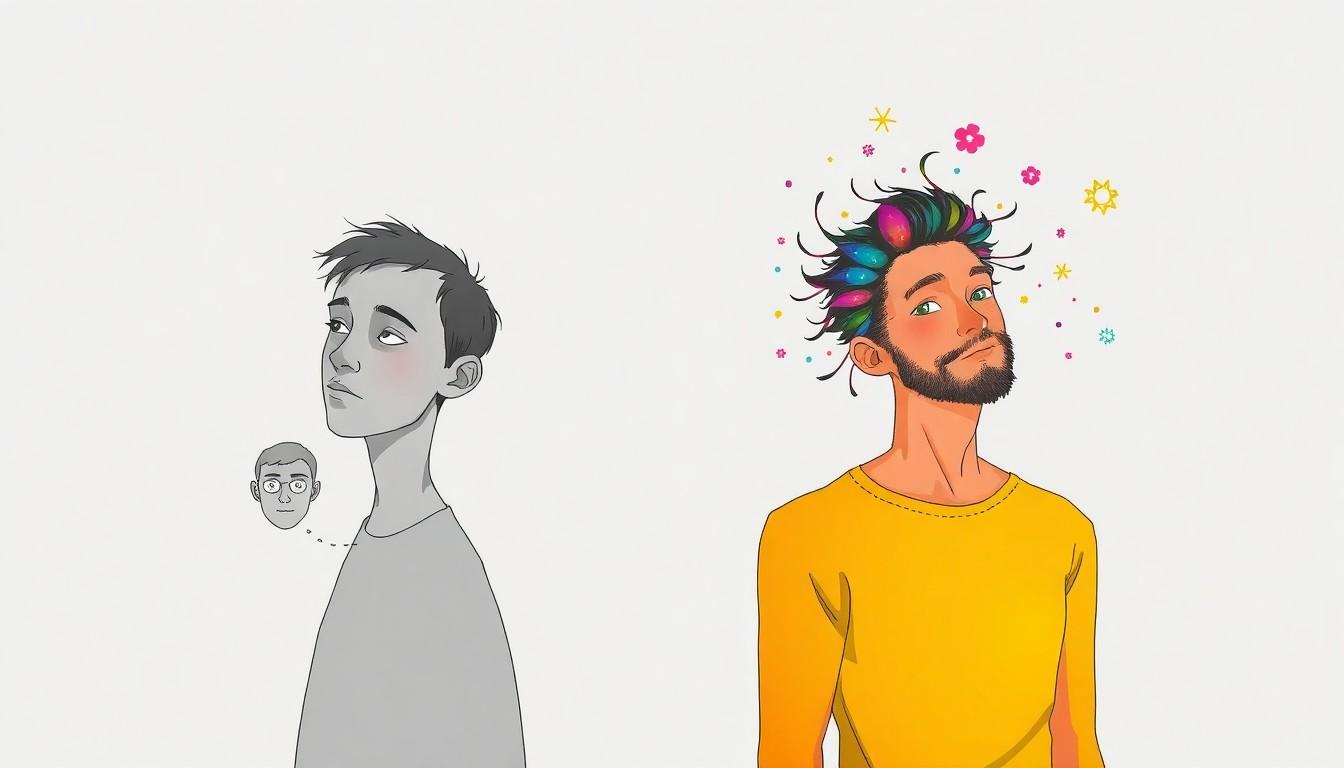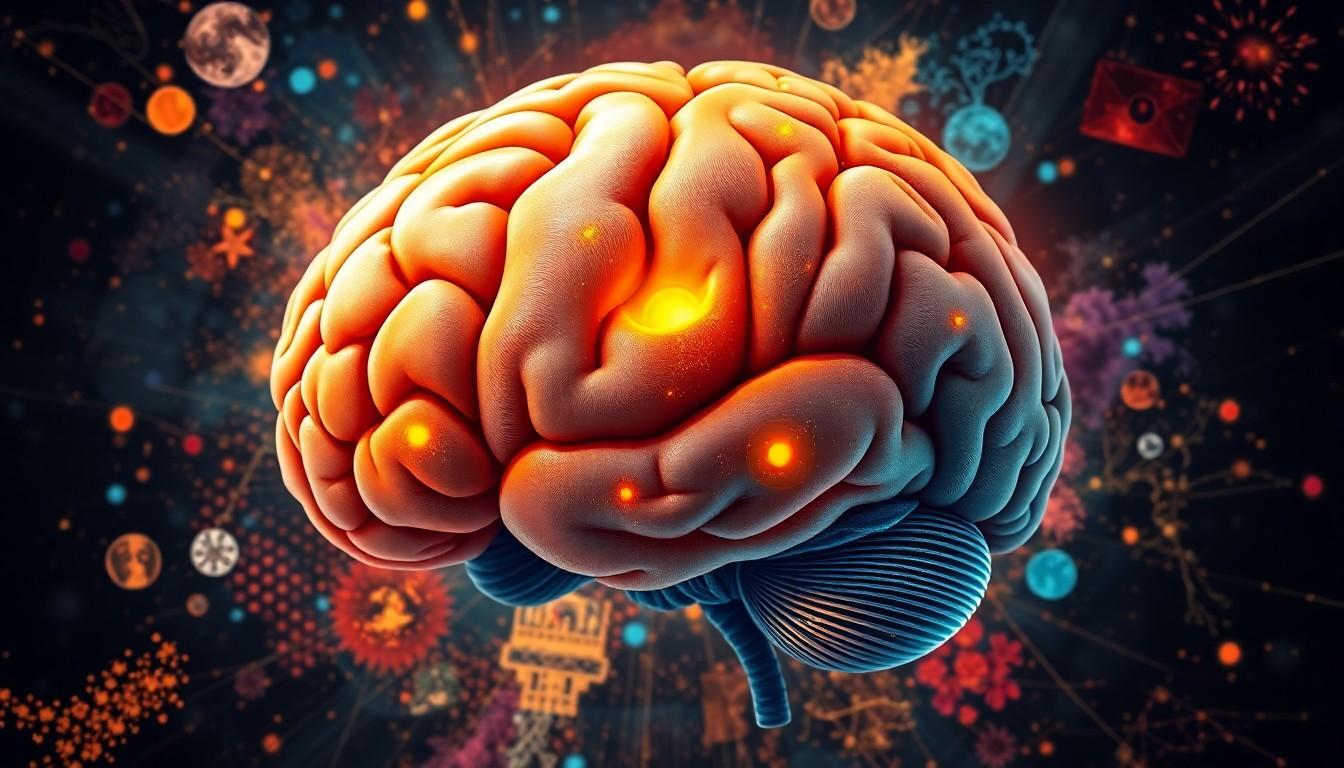Imagine a world where the mind’s eye remains blank, devoid of images and visual memories. This is the reality for those living with aphantasia, a condition that affects the ability to visualize mental images. While most people can easily conjure up pictures in their minds, individuals with aphantasia experience a different cognitive landscape, raising intriguing questions about the nature of imagination and memory.
Recent studies have shed light on this fascinating phenomenon, revealing its prevalence and implications for creativity and problem-solving. As awareness grows, so does the understanding of how aphantasia shapes the experiences of those who have it. Delving into the science behind aphantasia not only uncovers the mysteries of the human brain but also fosters empathy for those navigating life without visual imagination.
Understanding Aphantasia
Aphantasia refers to the inability to generate or experience mental imagery. This condition significantly affects how individuals perceive and recall visual information.
Definition of Aphantasia
Aphantasia is characterized by a lack of visual imagination. Individuals with this condition cannot picture scenes, objects, or events in their mind’s eye. Research shows that this inability can lead to unique cognitive experiences and differences in memory recall compared to those who can visualize.
Prevalence and Research
Aphantasia affects approximately 1% of the population, with estimates rising to about 5% under broader inclusion criteria. Studies indicate that people with aphantasia often display cognitive impairments like difficulty remembering personal events and recognizing faces. However, variations in cognitive functioning exist, as not all individuals face these challenges. Intriguingly, despite the inability to visualize during waking states, individuals with aphantasia can still experience visual dreams.
Types of Aphantasia

Aphantasia manifests in different forms among individuals, highlighting its complexity. Understanding these subtypes can provide insight into the varied experiences of those affected.
Variants of Aphantasia
Research indicates that aphantasia is not uniform; it includes several variants. Some individuals may exhibit notable challenges with autobiographical memory or face recognition, while others may not experience these difficulties. Variants can include specific cognitive impairments alongside the inability to visualize, making the condition multifaceted.
Aphantasia vs. Hyperphantasia
Aphantasia stands in contrast to hyperphantasia, the condition characterized by exceptionally vivid mental imagery. Individuals with hyperphantasia can create intricate visualizations, enhancing their imaginative and recall abilities. While aphantasia limits visual imagination, hyperphantasia amplifies it, demonstrating the range of experiences related to mental imagery. Understanding these differences helps delineate the spectrum of cognitive processing in those who experience variations in mental visualization capabilities.
Causes of Aphantasia

Aphantasia arises from various factors, both congenital and acquired, with ongoing research aimed at clarifying these causes. Understanding the neurological and psychological aspects is crucial to comprehending this unique condition.
Neurological Factors
Aphantasia relates to distinct characteristics of brain structure and function. Research indicates that individuals with aphantasia process visual information differently, particularly within the brain’s visual cortex. Processing shapes, colors, and visual details occurs at a slower rate for those with this condition. Findings show that areas responsible for visual imagery may exhibit less activity, leading to diminished confidence in accurate visual perception. The connection between these neurological differences and the experience of mental imagery remains an area of active investigation.
Psychological Aspects
Psychological factors also contribute to the understanding of aphantasia. Congenital aphantasia appears more frequently among individuals with family histories of the condition, suggesting a genetic component. Acquired aphantasia may stem from brain injuries resulting from trauma, strokes, or concussions, as well as certain mental health disorders, including mood disorders and depersonalization-derealization disorder. These psychological dimensions highlight how aphantasia progresses and manifests under different circumstances, further enriching the understanding of its causes.
Impact of Aphantasia

Aphantasia significantly influences various aspects of life for individuals affected by the condition, including daily challenges and professional opportunities.
Daily Life Challenges
Aphantasia leads to notable difficulties in memory and recognition. Individuals often struggle to remember the details of important past personal events, affecting relationships and identity. They may experience challenges in recognizing faces, impacting social interactions. Aphantasics also encounter issues with recalling visual details from stories or events, making it hard to engage in discussions reliant on imagery. Additionally, their reduced ability to imagine sensory experiences, such as music, can limit their enjoyment of arts and culture. These challenges often contribute to feelings of frustration and isolation, as they navigate a world predominantly centered on visual and imaginative experiences.
Creative and Professional Implications
Aphantasia affects creative expression and professional performance, particularly in fields requiring visualization. Many individuals in artistic professions, like visual arts and design, may find creative processes hindered by an inability to create mental images. This limitation can restrict the conceptualization of projects and ideas. In professional environments, those with aphantasia might face challenges in brainstorming sessions or collaboration that heavily rely on visualizing concepts. However, some individuals harness a different approach to creativity, often excelling in analytical and logical reasoning, leading to unique contributions in problem-solving contexts. While challenges exist, individuals with aphantasia can demonstrate resilience and adaptability in their creative and professional lives.
Conclusion
Aphantasia presents a unique perspective on cognitive processing and visualization. While it poses challenges in memory and recognition, individuals with this condition often find ways to adapt and thrive in various environments. As awareness of aphantasia grows, so does the understanding of its complexities and the diverse experiences of those affected. Recognizing the spectrum of mental imagery capabilities fosters empathy and support for individuals navigating life without visual imagination. Embracing these differences can lead to a richer appreciation of the human mind’s diversity.


